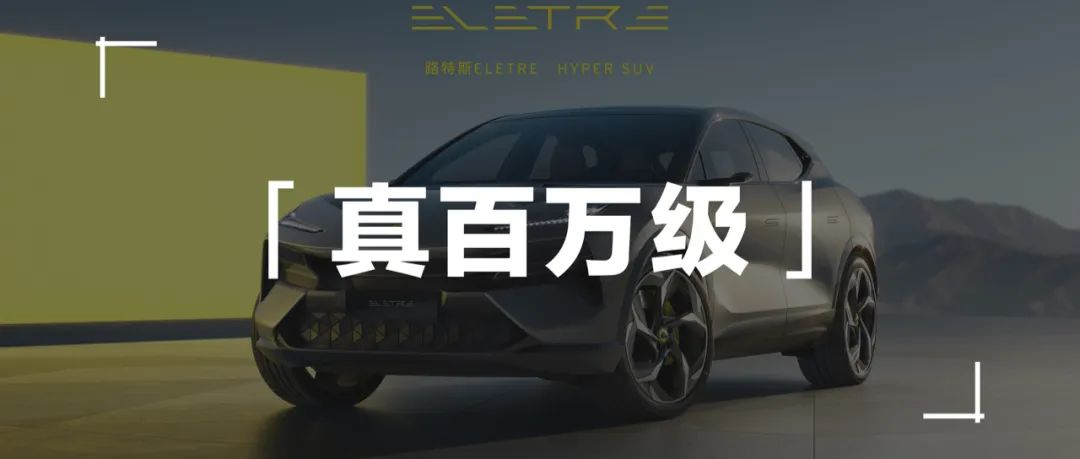Author: Mu Min
At 2:30 am on March 30th Beijing time, Lotus’ first pure electric SUV, codenamed Type 132, was finally unveiled in London, UK, and its official name is: Eletre.
“Eletre” comes from Hungarian, meaning “rebirth”.
Lotus Eletre is positioned as an E-class ultra-luxury SUV and is the first product of Lotus’ pure electric family. “High performance” is still Eletre’s product feature, but now it also adds “intelligence”.
Therefore, Eletre’s direct competitors are locked in “Model X Plaid, EQE-AMG SUV and iX M60”.
In order to stand out among these products, Eletre must have strong capabilities, let’s take a look together.
Beauty of Design and Engineering
After seeing the mass-produced product at the press conference, you will find that the restraint of other brands in terms of “cost” has disappeared on Eletre, just like a super product without “cost limitations”.
Without further ado, let’s showcase the craftsmanship.
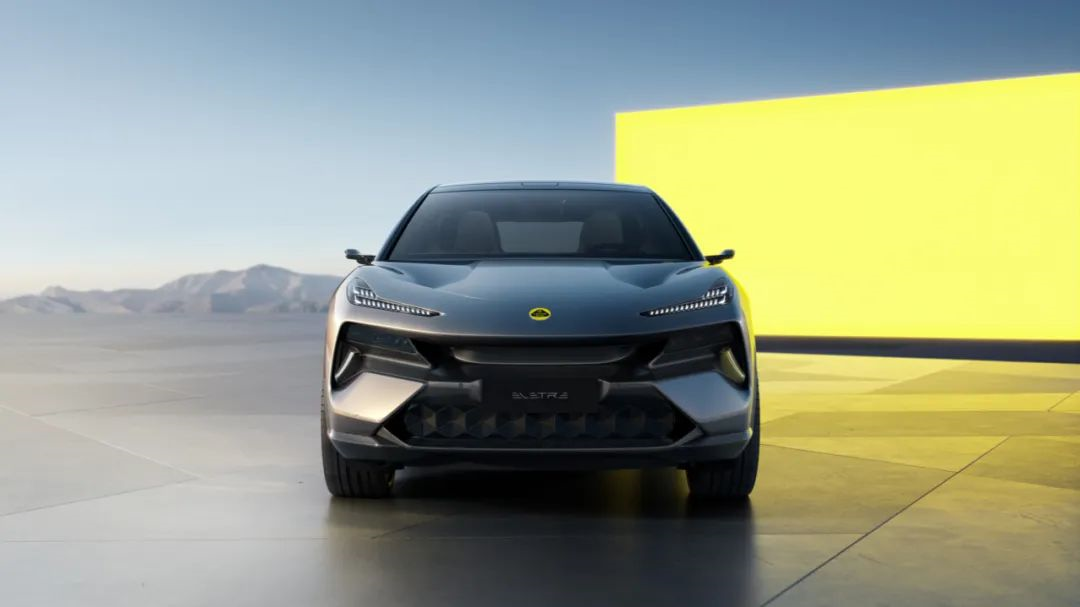
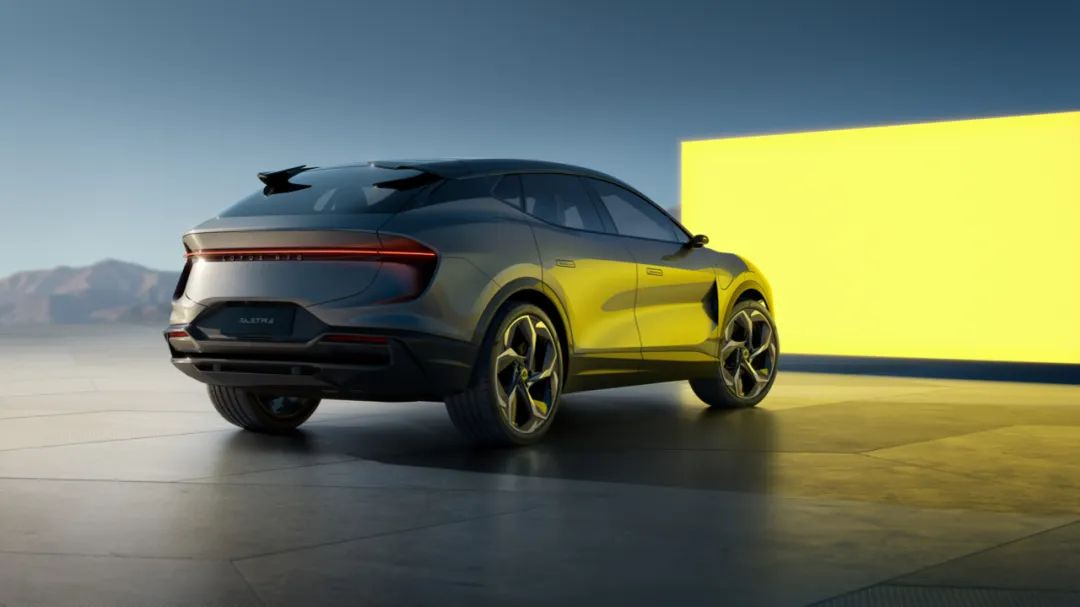
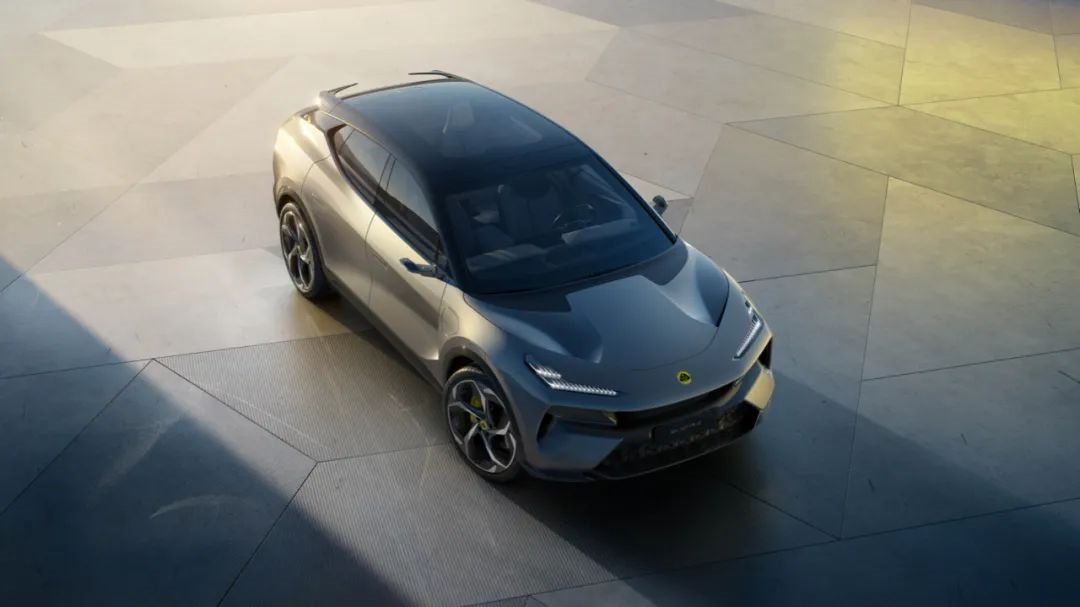
Look at the “Designers” who have been Liberated
Eletre’s body size is 5103/2019/1630 mm, and the wheelbase is 3019 mm. The vehicle width of 2019 does not include the rearview mirror. It is not difficult for designers to create on such a “large car”.
Front face design

Eletre’s design is crafted by Ben Payne, head of Lotus’ Creative and Innovation Center at Coventry University. The exaggerated aerodynamic design is fully displayed on Eletre, and the front face uses a very exaggerated carbon fiber-wrapped concave design.
 Below the front grille is the active lower air intake grille with infinite variable speed. The petal-shaped triangular blades form a matrix arrangement. When the car is stationary or needs to reduce resistance during driving, the petals will remain closed. If aggressive driving is required, the petals can be opened to inject air into the radiator to help cool the drivetrain system, battery pack, and front brakes.
Below the front grille is the active lower air intake grille with infinite variable speed. The petal-shaped triangular blades form a matrix arrangement. When the car is stationary or needs to reduce resistance during driving, the petals will remain closed. If aggressive driving is required, the petals can be opened to inject air into the radiator to help cool the drivetrain system, battery pack, and front brakes.
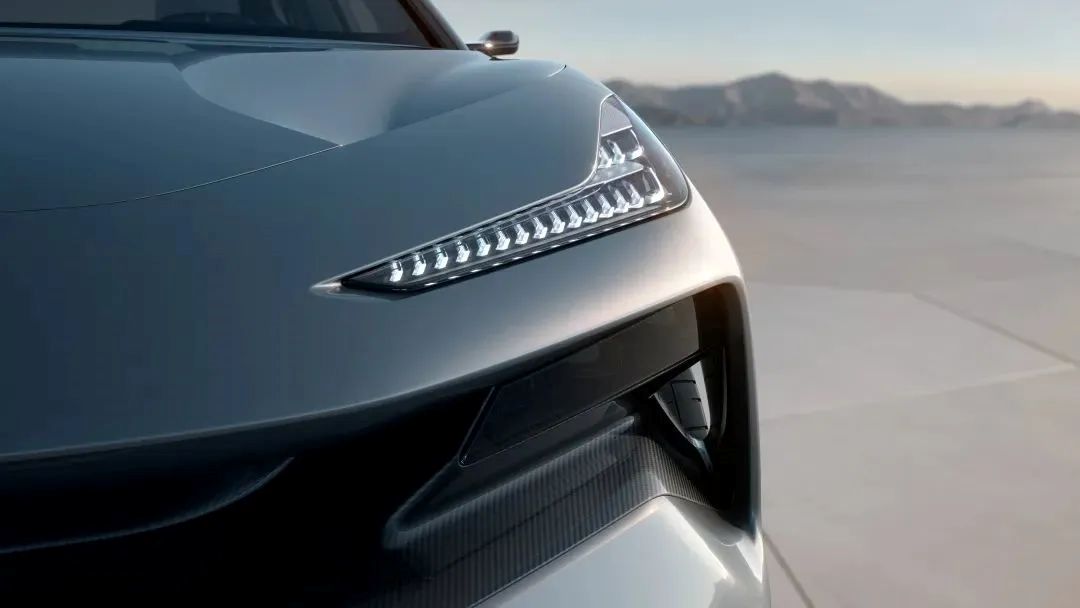
The piano key-style daytime running lights are paired with a through-type taillight group that can display the vehicle status with different colors. Under the rough and muscular mechanism, it creates the exquisite sense that a luxury car should have.
Side Design
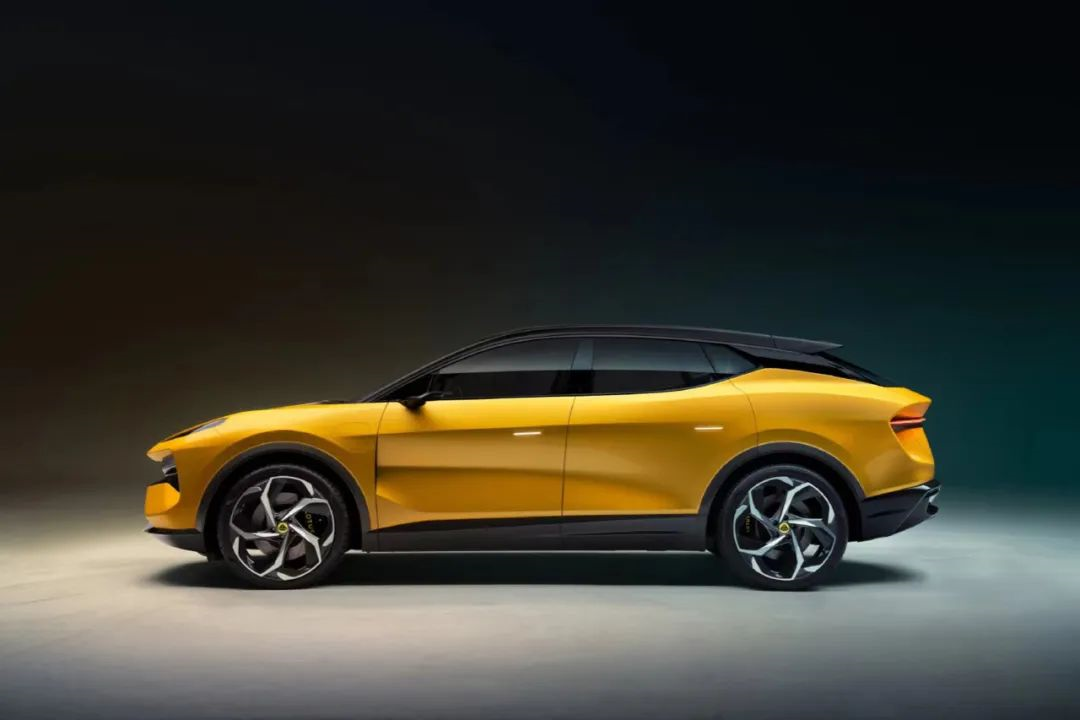
From the side, the Eletre looks very similar to a “coke bottle” car. The body proportions are slender, and the floating roof makes the visual effect flat. The through-type waistline design is simple and the Lotus design team clearly did not want to use complicated lines to disrupt the overall side view.
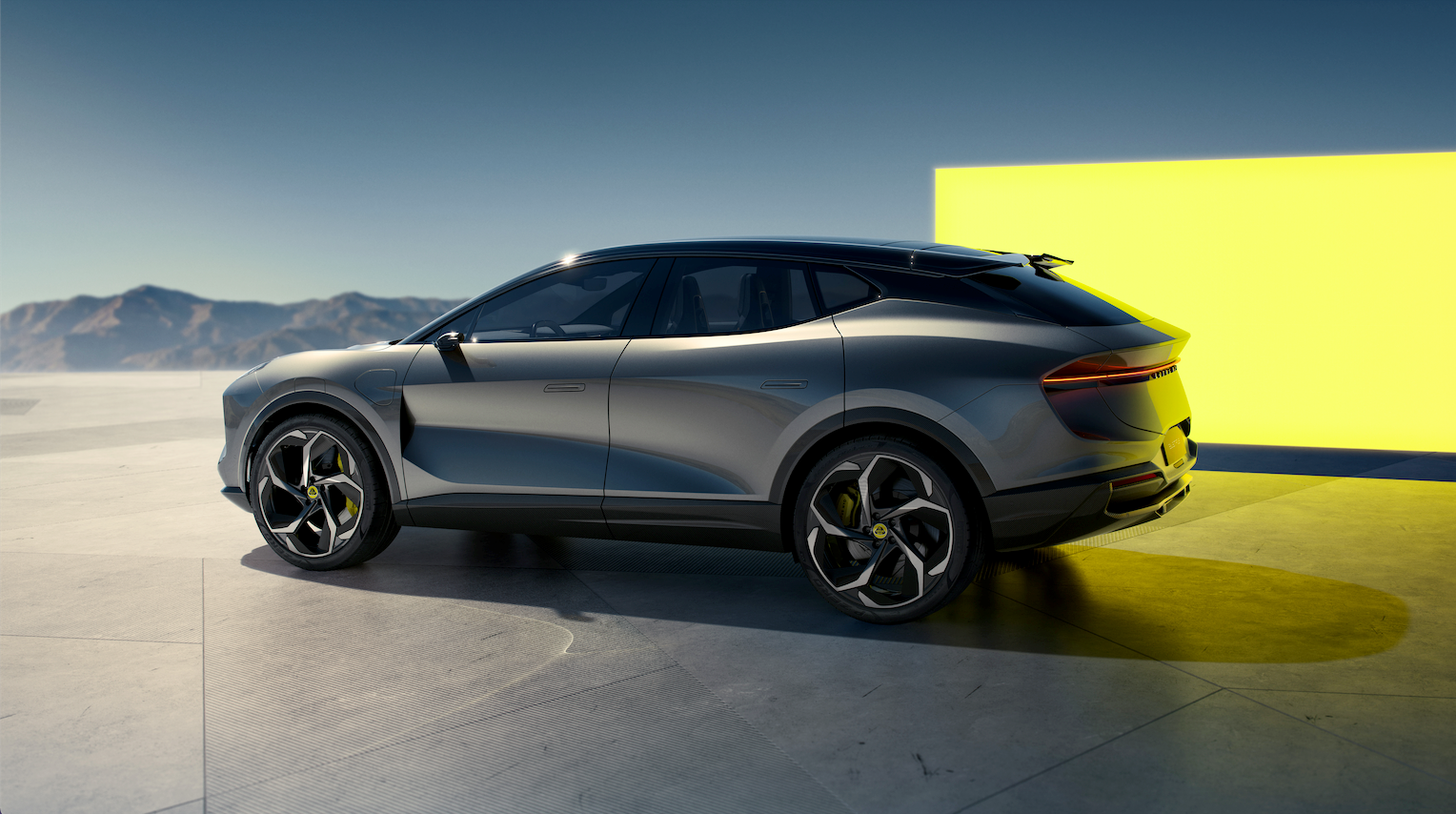
The finishing touch is the sculptural “cutting” design on the door, which creates a light and shadow feeling as if watching the architectural works of Master I. M. Pei.
If a 23-inch blade-style five-spoke alloy wheel is selected, with carbon fiber inlays that assist with airflow and two 10-piston carbon ceramic braking systems, it would have even stronger visual impact.
Rear Design
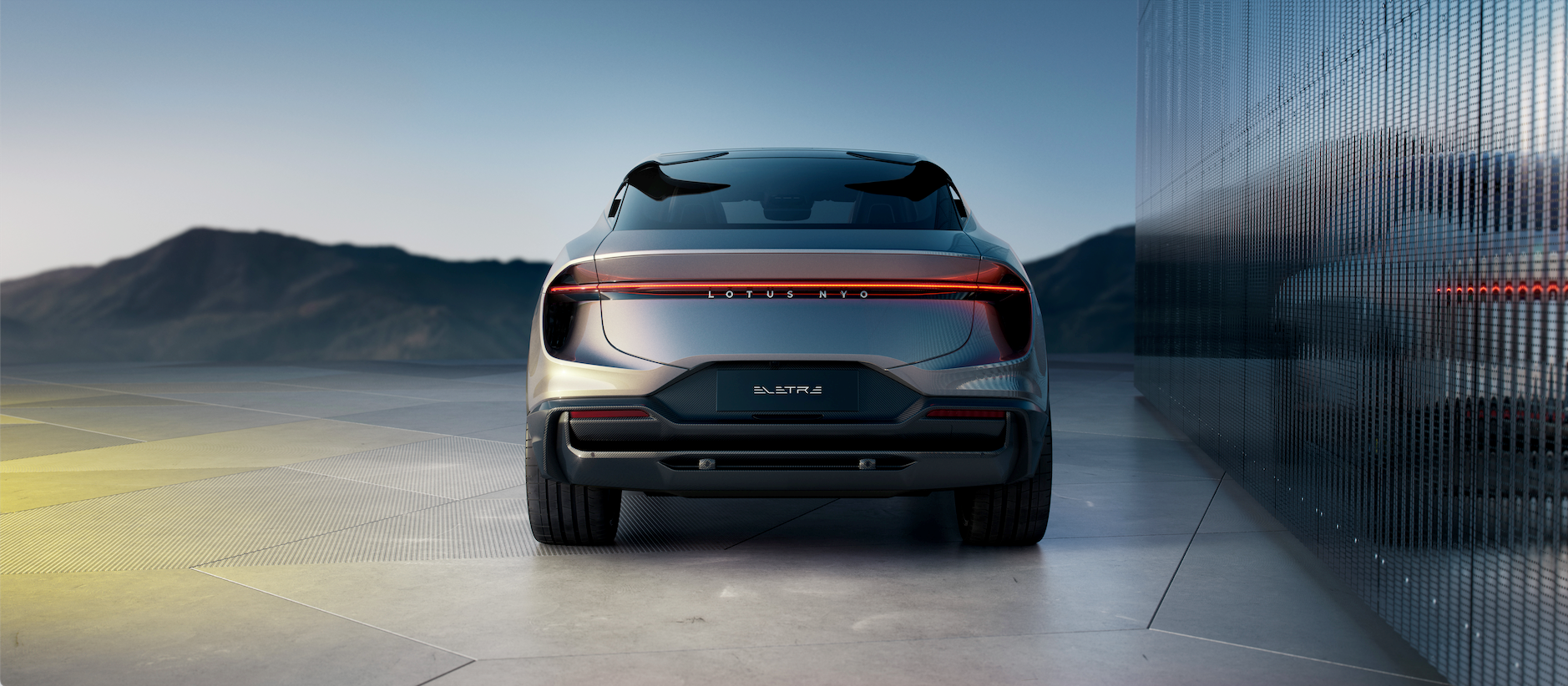
Similar to the front, the rear also has very exaggerated “holes”. Porosity is an important symbol of Lotus’s product design and is also a manifestation of aerodynamic advantages. “Porosity design” has been extended from Evija and Emira to Eletre.
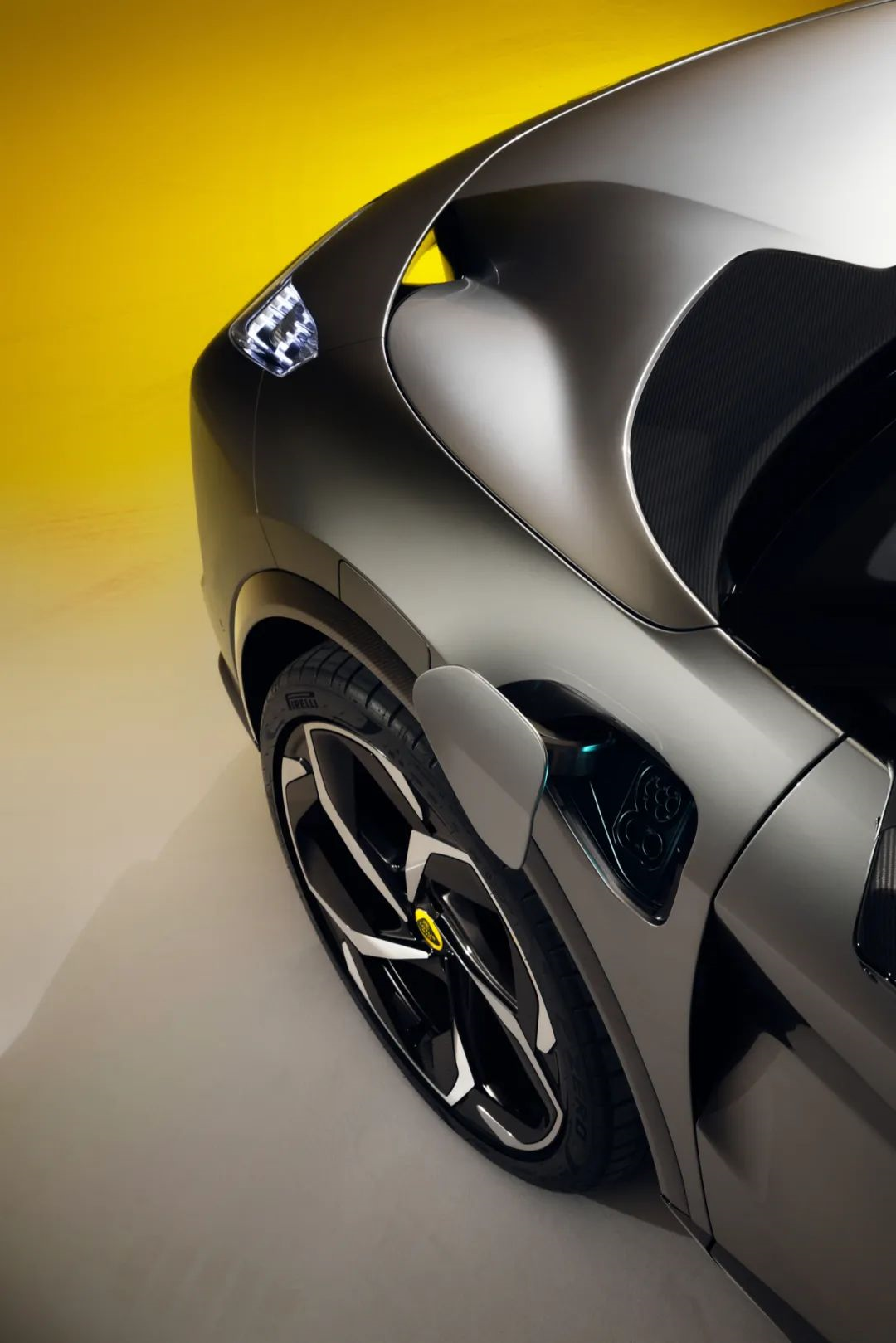
Elements of “holes” can be found not only in front of and behind the front wheel arches, and behind the rear wheels but even on the roof of the D-pillar. Note that it is not only for decoration; on the contrary, it is for optimizing wind resistance. Porosity has obvious benefits: “It reduces resistance when cutting through the air, effectively improving the range, speed, and handling performance.”
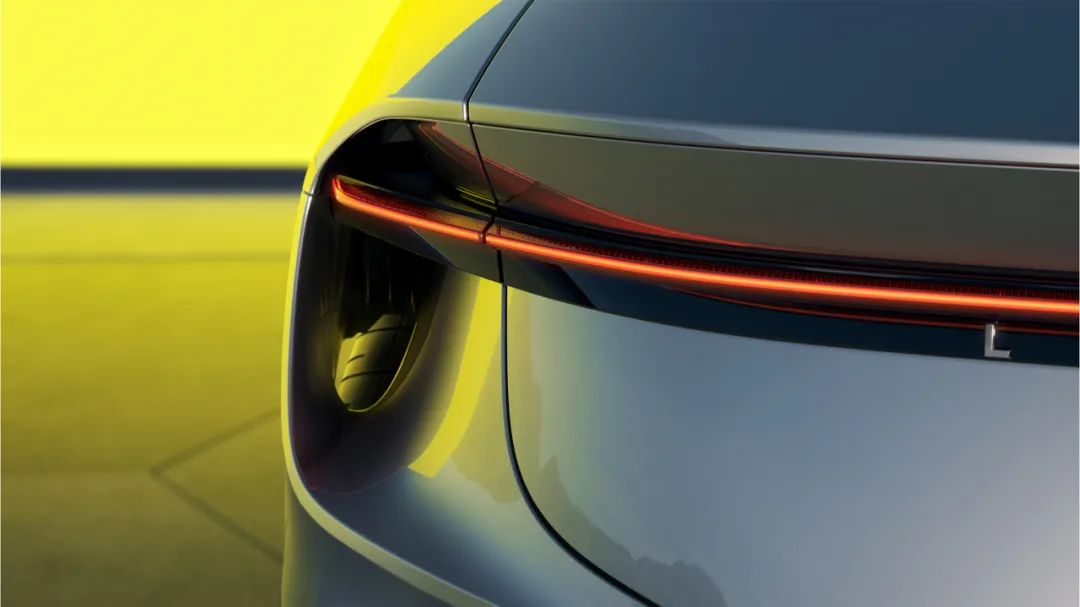 #### Interior Design
#### Interior Design
To summarize in one sentence: “This is the interior design of the only two good-looking and practical super luxury pure electric SUVs that I have ever seen“.
Eletre has three screens in the front row: the instrument panel, the central control screen, and the passenger-side screen.
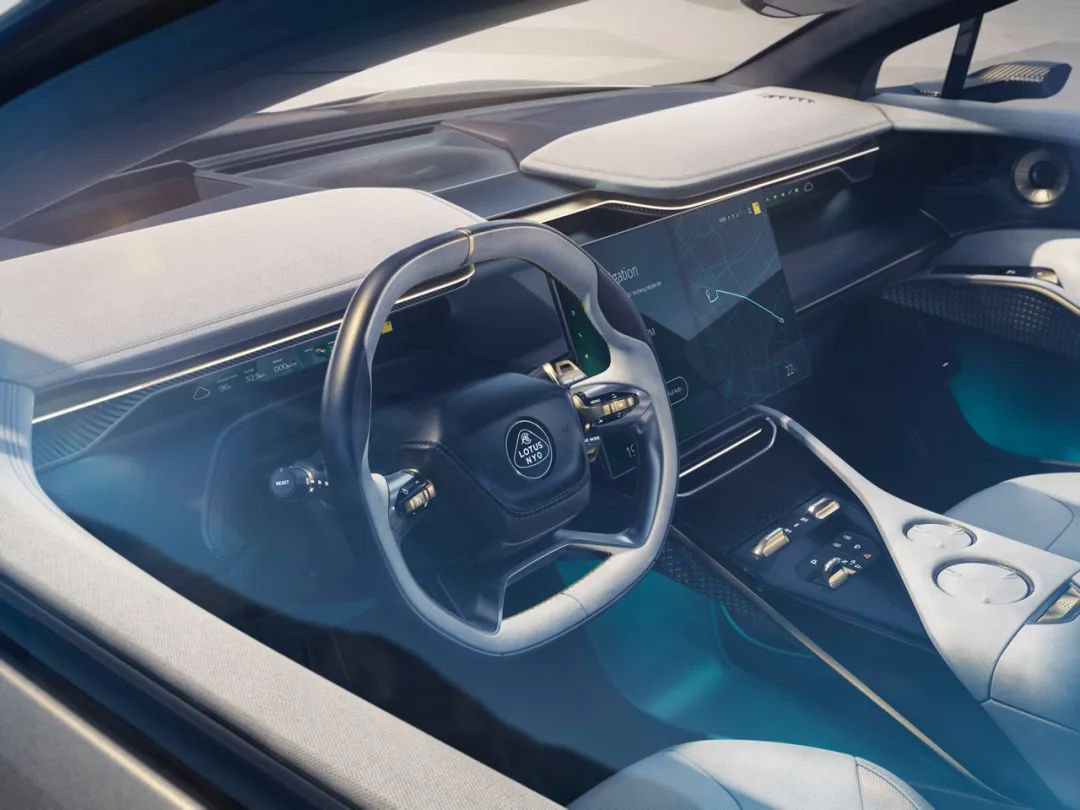
The difference lies in the form of the screens, with 3 cm high screens used on the driver and passenger sides to display driving information, and a 15.1-inch central control screen that looks relatively normal. What is surprising is that this screen can be retracted when not in use.
In terms of interaction, Eletre only retains a small number of physical structures, mainly at the center console, for electronic gear shifting, door locking and unlocking, air conditioning adjustment knobs, and warning lights.
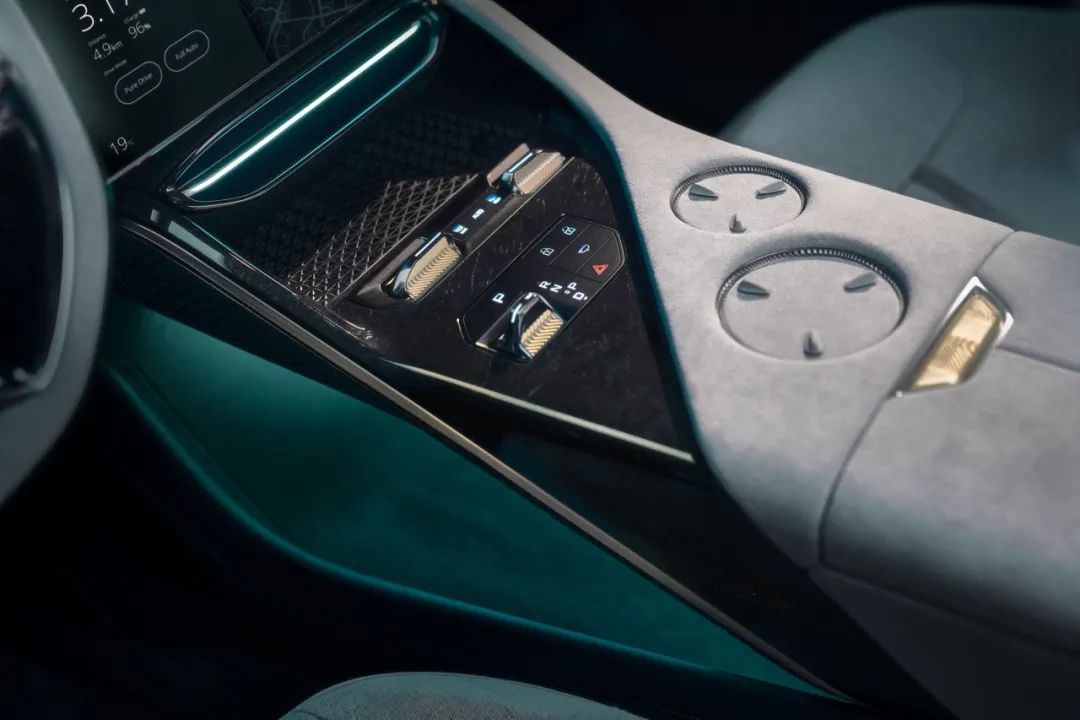
Interestingly, Eletre retains these physical structures not entirely for functionality, but rather for their “good looks + practicality.” Lotus said that over 95% of Eletre’s functions can be completed through the vehicle’s computer. Retaining physical structures is necessary to ensure the overall design.
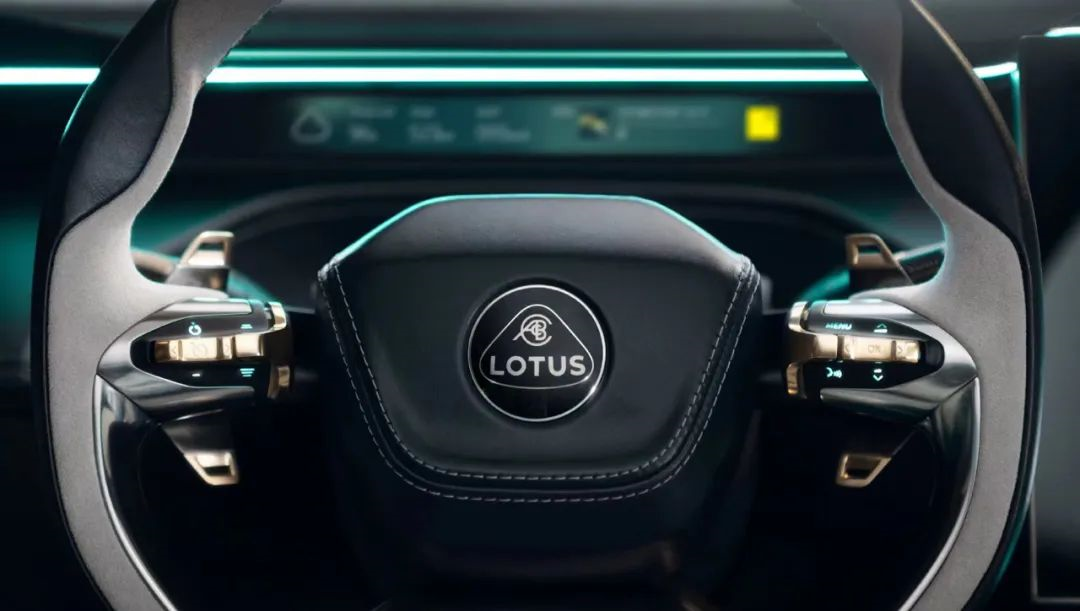
Eletre’s steering wheel is also a multifunctional design. In addition to the usual assisted driving, music switching, and voice control, the designer also set up left and right “shift paddles” that, in addition to displaying performance genes, make some small changes in functionality. The left paddle adjusts the kinetic energy recovery intensity and the right paddle switches driving mode.
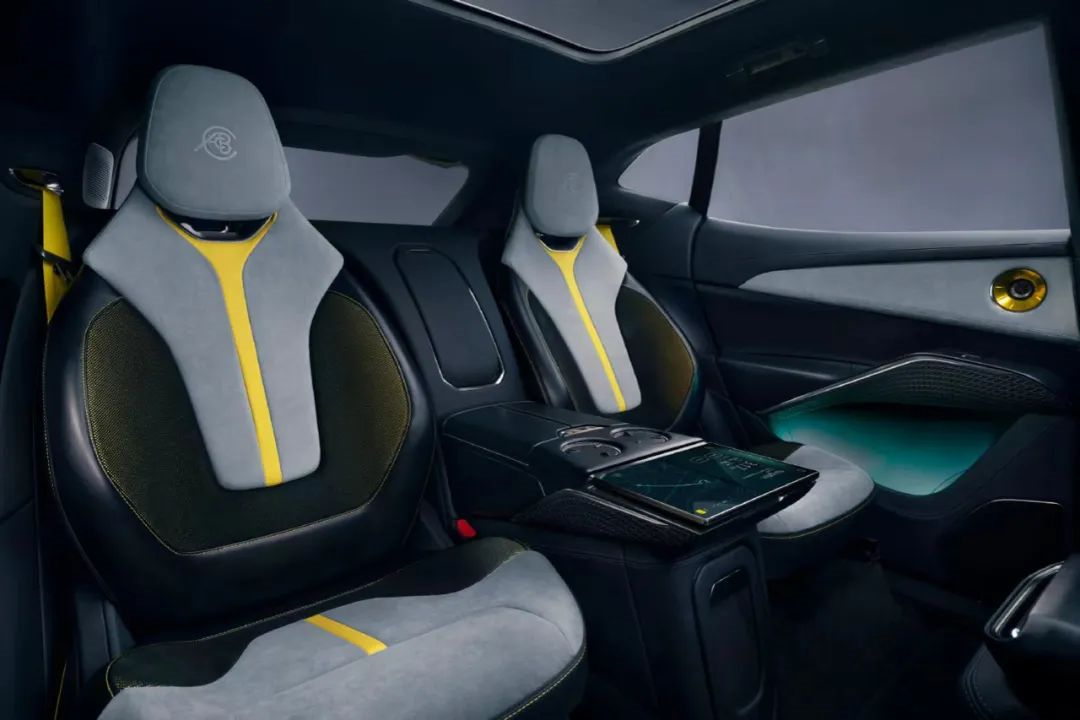
The rear seat design also has a 9-inch entertainment screen, which can be adjusted in the same way as the central control screen, and from the official pictures, it has a delicate display. In addition to conventional air conditioning and entertainment adjustments, it should also support independent navigation viewing.
You may notice that we have not yet discussed the seats or materials used. Let’s just look at the pictures for this part:
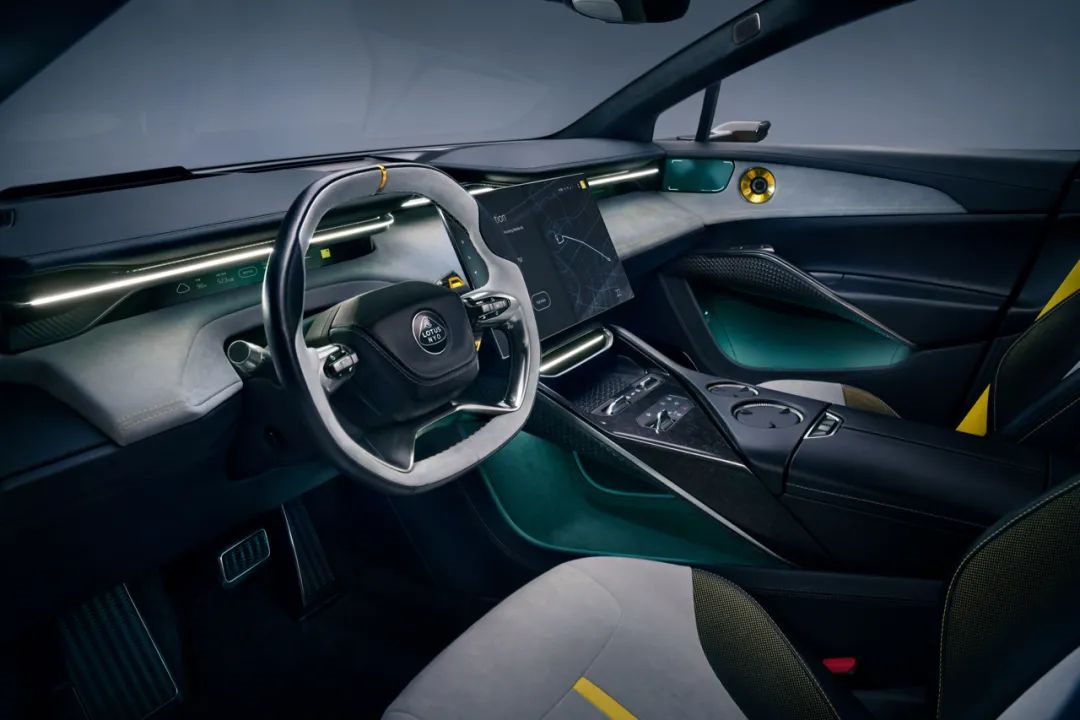
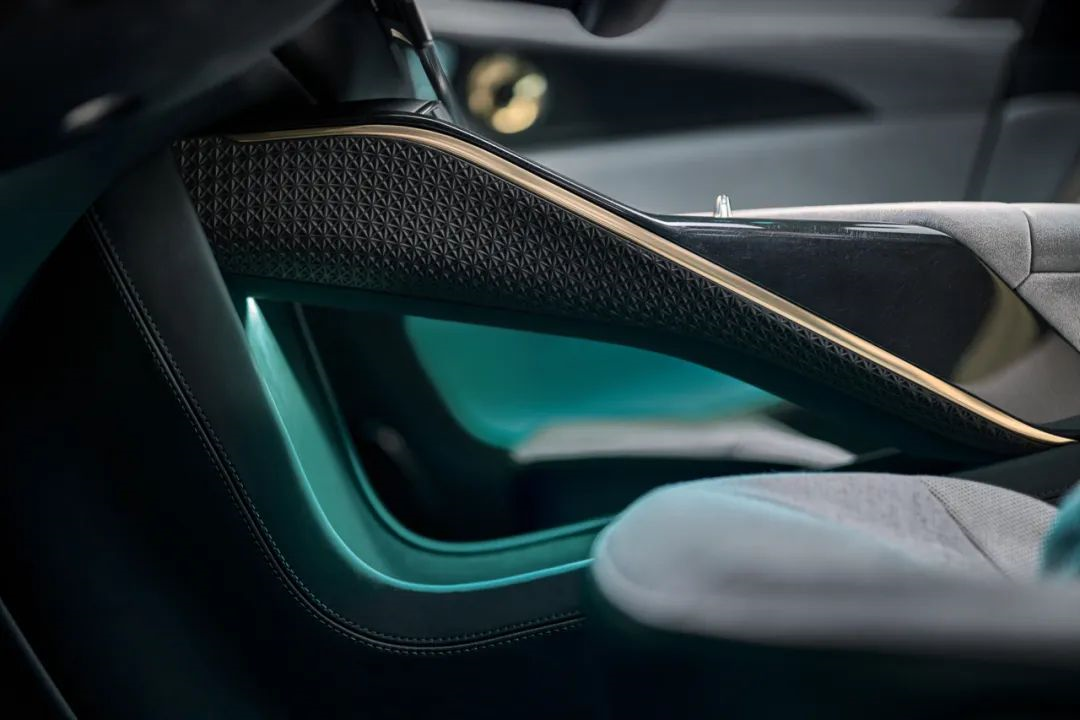
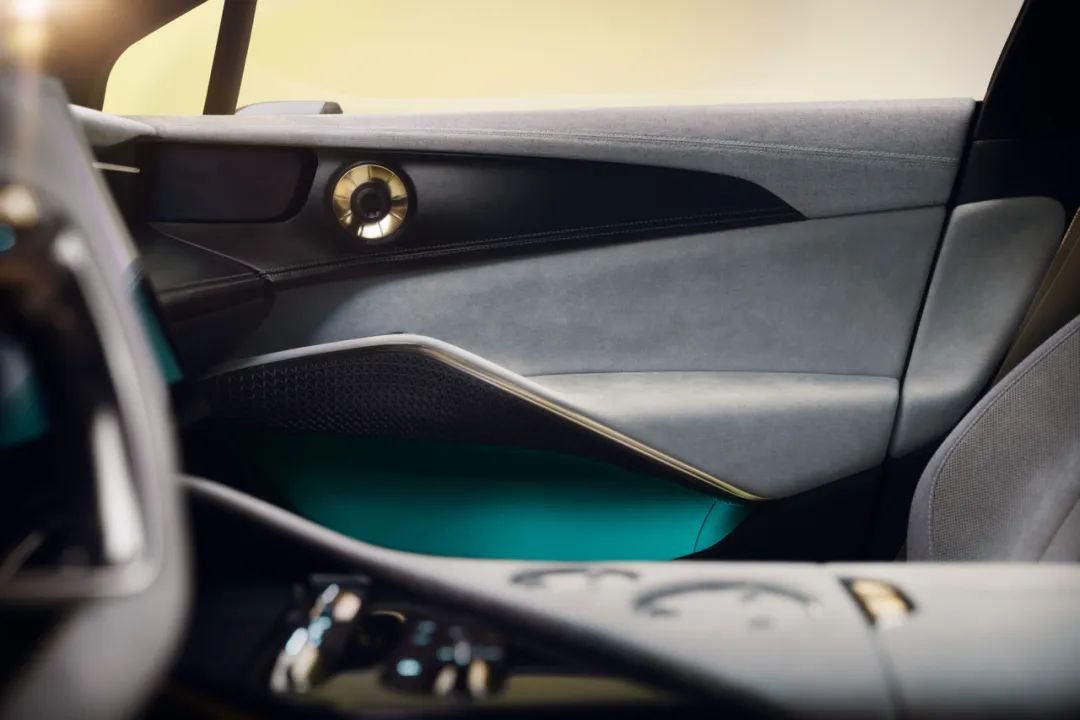
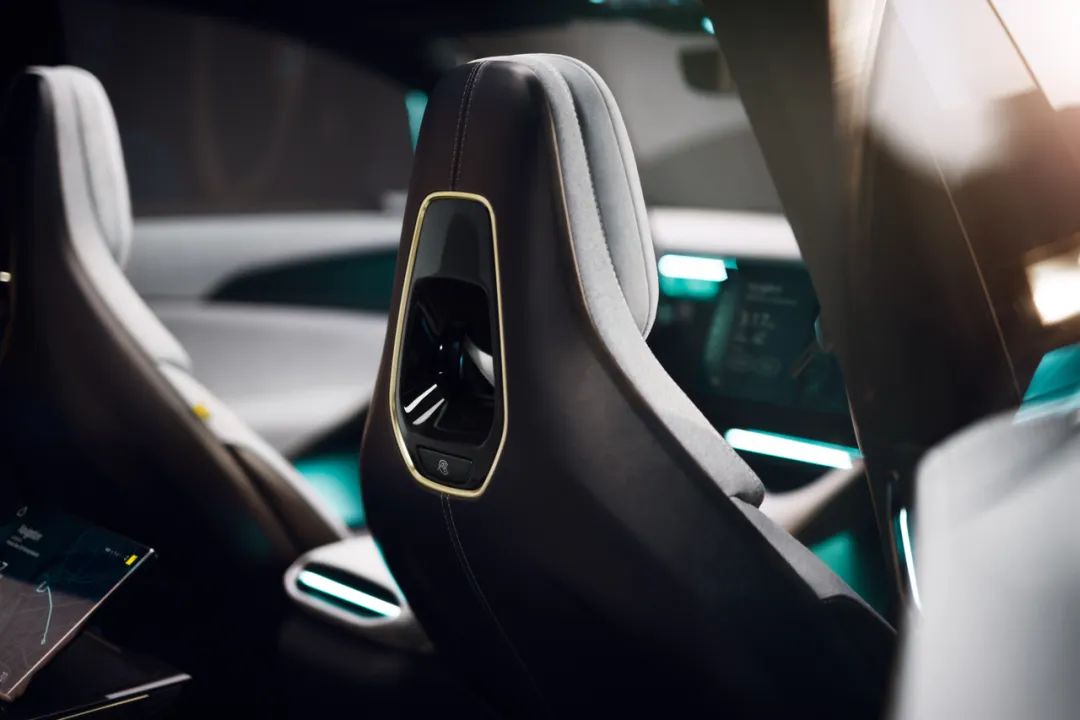
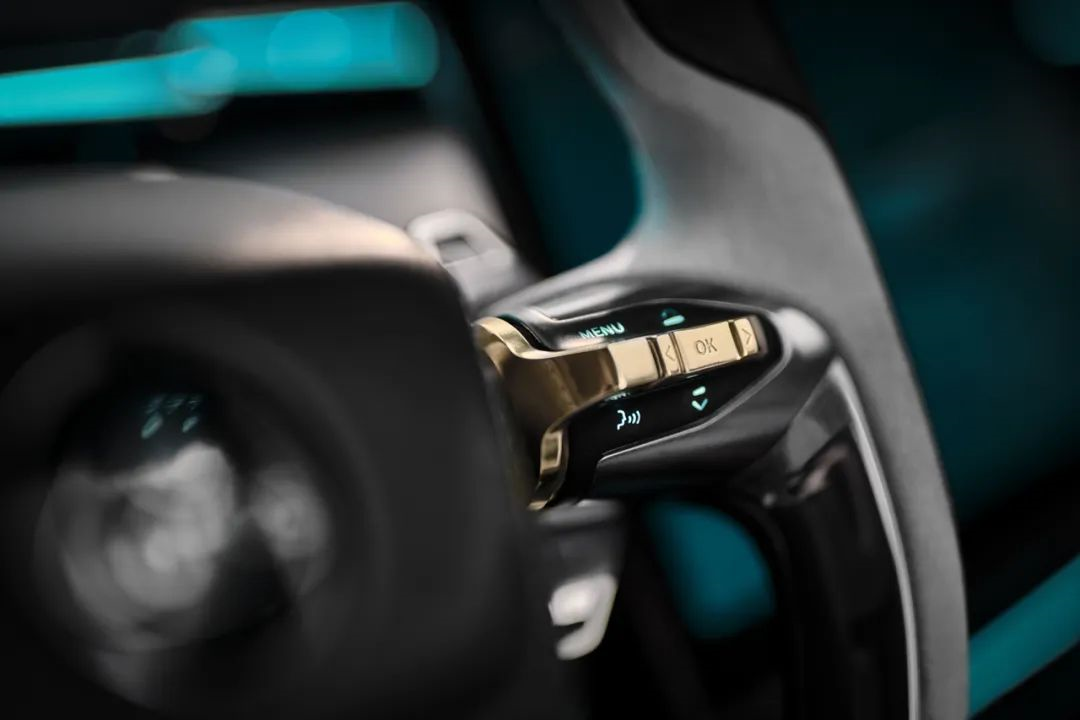
As you can see, there are all kinds of fur (the material is uncertain, but it looks luxurious), leather, and chrome decorations.
Besides what you can see, there are also unseen configurations, for example:
- The KEF audio system from the British brand KEF is a standard feature of the entire Eletre series, which is also the first time KEF’s products have been used in mass-produced cars;
- The KEF Premium is a system with 15 speakers and 1380W power, featuring Uni-QTM and surround sound technology;
- Lotus also offers an upgraded version of the KEF Reference system with 2160W power, 23 speakers, and Uni-Q, 3D surround sound, and other configurations.
Without the V8 engine, the super sports car becomes a true enjoyment to drive quietly. If you think that design is subjective, I don’t think there is any reason for you to argue with Lotus Eletre, because every design, both exterior and interior, is just right. In terms of interior design, except for Tesla’s new Model X, it’s hard to find a product that balances luxury, technology, and simplicity so well.
If there must be some criticism, then the only thing that might be mentioned is the price. Can it be cheaper?
Let’s take a look at the “engineers” of Geely
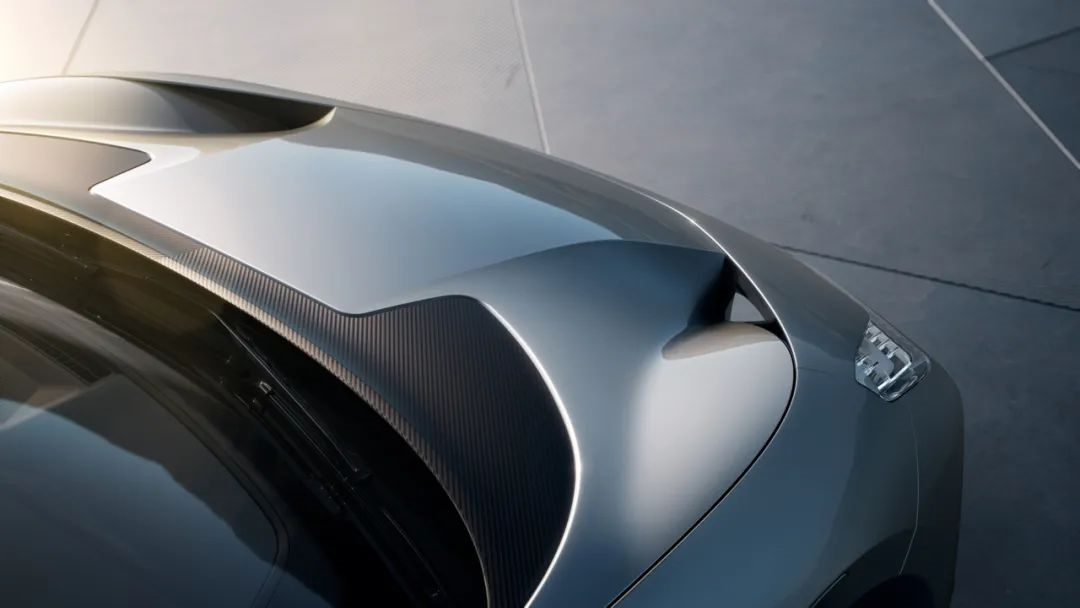
Automotive engineers often have the opportunity to create classic products that can be passed down through the ages. This is common in traditional cars, and Eletre is Geely’s first pure electric SUV after taking over Lotus, and it is lucky and happy for engineers to participate in creating a vehicle with a natural user base in China.
EPA Platform
After I posted the information about Eletre on Weibo, many people had various understandings of the platform of this car. Although the article may be lengthy, I still want to make it clear.
Eletre adopts the EPA Edge Evolution architecture, which is actually SEA-S, and also a derivative of PMA 1 architecture.
It may seem confusing because there are three architecture names mentioned: PMA, SEA-S, and EPA.
Actually, in June last year, Kent Bovis, Chief Architect Engineer of Geely, answered this question in an interview with the media in Malaysia. The so-called PMA platform consists of multiple series, which together form the SEA vast architecture. Whether it is PMA or EPA, they are both subdivided platforms under the SEA architecture (just a general term and not a product).
Weibo car blogger “Ball Malleable Iron BX” posted an overview of this platform, and it was officially announced that the SEA architecture is divided into five branch platforms, the first two of which are the main ones and the latter three are supplementary:
-
SEA 1: Medium to large car platform, namely PMA 1. Includes, extreme Kryptonite 001, medium to large MPV EF1E, Polestar medium crossover vehicle/sedan SUV P419, and Jidu.
-
SEA 2: Small to medium car platform, namely PMA 2. Includes, smart small SUV HX11, small four-door crossover car HC11, Volvo small SUV V216, and extreme Kryptonite small SUV BX1E, mainly front McPherson and rear multi-link suspension.
-
SEA-E: namely PMA-3. Includes smart two-door car, Geometry four-door micro car, and other relatively inexpensive micro car platforms, with optional batteries of 58 or 68 degrees, and the smallest planned model with a wheelbase of 2550mm.
-
SEA-S: sports, also known as EPA, high-performance sports car platform, benchmarking Porsche PPE, derived from PMA 1. Includes, Lotus medium to large SUV Type 132, medium to large four-door sedan Type 133, medium crossover vehicle Type 134, excluding sports cars and 001 high-performance versions.
-
SEA-C: Commercial vehicle platform, can produce vans, 3.5 to 5.5-ton pickup trucks, or 13-seater minibuses. One-piece body, battery load-bearing capacity, and can share common components with other SEA branch platforms.
Why mention these?
Knowing the platform architecture of Geely and Lotus, we can know the specific product goals the engineers aim to achieve for this car.
The characteristics of the EPA architecture are, “support for 800V high-voltage platform, optional batteries of 92-120 kWh, and all products are within the level of 3 seconds.”
Take a look at the hardware of Eletre:
-
“800V high-voltage platform,” which can be charged in 5 minutes, with a range of over 120 kilometers (WLTP), and can travel 400 kilometers (WLTP) in 20 minutes of charging.
-
Dual motor four-wheel drive powertrain, with peak horsepower up to 600, and there will be even higher horsepower models in the future.- Eletre can accelerate from 0 to 100 km/h in just 2.95 seconds and achieve a top speed of 260 km/h.
-
Equipped with a 105 kWh battery, Eletre can travel up to 600 km under the WLTP test cycle and be charged with a peak power of 350 kW.
These are just the basics of an electric vehicle. To produce an electric car with high-performance driving capabilities, this is what Lotus’s engineers are thinking.
Eletre adopts a rear five-link suspension, standard air suspension, and CDC continuous damping control system, making driving an electric car more comfortable. The 48V anti-roll system, rear-wheel steering, and active differential make driving an electric car more aggressive.
Regarding the 48V anti-roll system, Eletre did not elaborate much. Many people are unfamiliar with it, but let’s take a look at the ability of this system on Bentley:
“This is an active anti-roll technology that uses a 48V electric drive. Bentley claims that this is the industry’s first. The system can respond within 0.3 seconds and apply up to 1300 N·m of torque to counteract lateral pressure during turns.”
Obviously, this is for handling.
To improve handling, the engineers also moved the cockpit forward to achieve a forward visual center of gravity. Lotus has long studied mid-engine sports cars and adopted a mid-engine aesthetic design by moving the cockpit forward. This way, the visual focus is mainly between the wheels, giving the driver a better driving view.
Currently, there isn’t much information about the car’s driving details, but keep in mind that this is a Lotus, which has a golden signboard and many years of race track tuning experience. It is precisely because of this that driving this car is the least worrying.
In summary, this car is almost perfect. There is no strong oppression of Lamborghini and McLaren’s design, nor does it have the round and lazy feeling of Porsche Cayenne. The overall design is not complicated, and the optimized aerodynamic components are also very harmonious.
As Lotus said: “When the user approaches the car, the outer headlights light up in a certain order, the front grille begins to breathe, and the illuminated hidden door handles automatically open. After entering the car, the cabin screen also has a welcoming sense of ceremony.”
Eletre has a design of 7 air ducts, plus an electric wing that can provide an additional 116 kg of downforce. In a word: This is a car that does not consider “cost” control.
As the “first” pure electric SUV of Lotus, the engineers are very clear that it is not for mass production. The so-called “not considering costs” actually means that the engineers hope to demonstrate Lotus’s engineering technology to the greatest extent. Eletre will carry the beginning of all “new dreams” of Lotus’s owners, and it is their spiritual totem.
Intelligence: Hardware to the max.# Lotus’ Transformation towards the Electric Era: Eletre, the “Hyper SUV”
Lotus is transforming towards the electric era, and one of the crucial steps is to solve the intelligent capability problem. For a luxurious electric vehicle, the intelligence system hardware determines its ceiling. Eletre seems to have found a way to ignore costs.
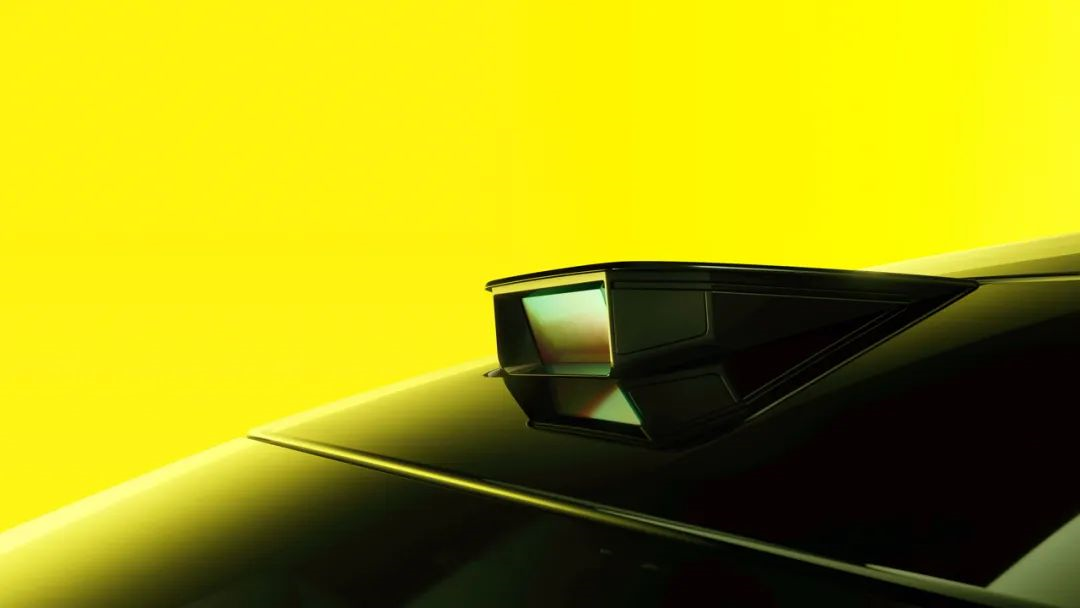
Eletre is equipped with 34 driving assist sensors:
- 4 128-line LiDARs
- 6 millimeter-wave radars
- 12 ultrasonic sensors
- 4 2-million-pixel surround-view cameras
- 7 8-million-pixel auxiliary driving cameras
- 1 interior camera
It has two computing platforms:
- 2 Nvidia Orin chips, for self-driving with 508 TOPS computing power
- 2 Qualcomm 8155 chips, for super image rendering and support for 3D imaging, for cabin entertainment
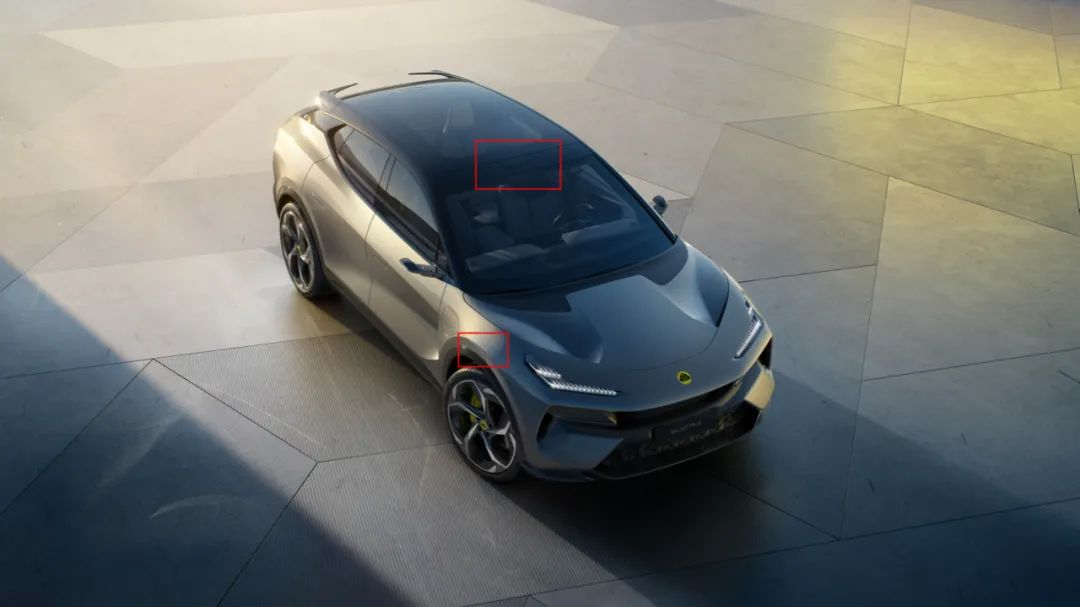
Eletre’s LiDAR system is ingeniously designed to be hidden. The retractable LiDARs are installed at the top of the windshield, the front wheel arches on both sides, and the rear end. However, this design also has some potential problems such as the durability of the retractable mechanism and the visibility of the LiDARs.
In terms of software, Lotus and Momenta jointly established Ningbo Lotus Robotics Co., Ltd. in November last year, the first joint venture between a passenger car company and a self-driving company in China. Judging from Momenta’s R&D direction, their cooperation may focus on visual perception algorithms.
But there are also uncertainties. Momenta partners with multiple car manufacturers, making product delivery highly uncertain. Therefore, Eletre’s system delivery may be a “futures” product.
As for intelligent hardware itself, Eletre is one of the most advanced vehicles on the market, and the biggest advantage of good hardware foundation is that it has a very high growth ceiling. It can not only support software updates throughout its entire lifecycle but also exceed expectations. Now all we need to do is wait for Lotus to complete the software development.
Why the world needs Lotus
After searching Lotus’ official website on Baidu, the first sentence that caught my eye was: “HYPER SUV“.
Advanced players know what “hyper car” means. It basically surpasses the boundaries of most people’s dream car.
“HYPER + SUV” is the first time this combination has been put together, and in my memory, it is the first time it has been placed at the forefront of a brand’s official website.Inventory of expensive domestic SUVs sold in the market:
- NIO sells for four to five hundred thousand;
- GAC sells for six to seven hundred thousand.
Facing the Chinese automotive industry’s dream project, it seems like we are missing something?
My answer has always been: “Millionaire Domestic Brands“.
And indeed we need such brands and products.
However, creating a brand is really difficult, and creating good products is even more difficult. The time given by the market is too limited, and the time that users can wait for and learn is extremely limited. Lotus has provided a template.
“If GAC is the devil boy in the village after getting rich, then Lotus is the rich son who returned home after studying abroad.” Perhaps in the future, we will no longer need imported cars with blond hair and blue eyes, because indigenous people may understand us better.
I first saw Eletre in March and April of 2021. To be honest, Eletre, which was still called Type 132 at that time, didn’t look as good as I imagined when I first saw it in the bay, like an overdressed top student, “exaggerated aerodynamic kits, colors, and disharmonious Nappa leather seats.”
In the following year, I heard that there were several private media events and face-to-face activities with users and so on, which turned this car into an exciting state last night. Almost all car chatting groups are talking about this pure electric SUV that may cost over a million yuan. From a dissemination perspective, this is also a kind of success.
2.95 seconds from zero to one hundred kilometers, 600 kilometers of endurance, 800V high voltage platform, currently these are all paper data, because there is no real car yet. But the aesthetics of dissemination and shaping of yearning have already made this old driver who loves driving full of expectations for the driving experience of this car.
Do you know that the Evore produced ten years ago is still very easy to drive today? So I am looking forward to Eletre being obedient and crazy, proficient and arbitrary when driving.
In short, the excitement and expectations have been injected, and the rest is waiting for the test drive.
NIO has made many X5 and Cayenne owners trade down, so it has succeeded.
And Lotus Hyper SUV wants to make Urus owners trade down. Whether it can succeed or not is uncertain, but at least it is possible.
It may not be rigorous to say that Lotus is what this era needs, but at least Chinese brands and the Chinese automotive industry need Lotus.
This article is a translation by ChatGPT of a Chinese report from 42HOW. If you have any questions about it, please email bd@42how.com.
